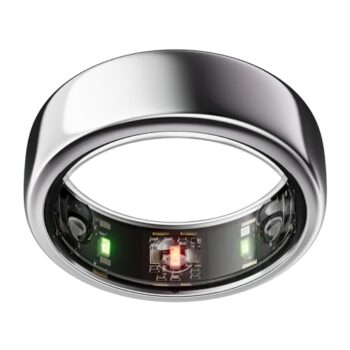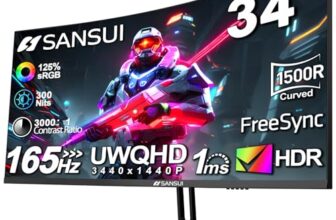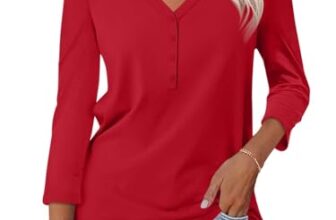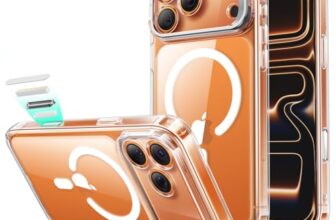The Final Word in Wearable Tech? An Exhaustive 6000-Word Oura Ring Gen3 Horizon Performance Benchmark
In the ever-accelerating world of personal technology, the quest for the perfect health wearable has been a journey of constant evolution. We began with rudimentary pedometers, clunky chest straps, and wrist-worn devices that felt more like miniature computers than seamless extensions of our bodies. While these devices have grown incredibly sophisticated, they often come with compromises: distracting screens, uncomfortable straps worn during sleep, and a primary focus on active calories burned rather than holistic well-being. The market has been crying out for a device that is not only powerful but also discreet, comfortable, and intelligent enough to understand that recovery is just as important as activity. This is the very niche that the smart ring, and specifically the Oura Ring, was born to fill.
The Oura Ring Gen3 Horizon represents the pinnacle of this new paradigm in personal health monitoring. It’s a device that promises research-grade sensor accuracy in a form factor so elegant and unobtrusive it seamlessly blends into daily life. It doesn’t demand your attention with constant notifications or bright screens; instead, it works silently in the background, gathering a wealth of biometric data to provide you with a profound understanding of your body’s three fundamental pillars: Sleep, Readiness, and Activity. This is not just another fitness tracker; it’s a comprehensive life-readiness tool.
This review is more than a simple overview. It is an exhaustive, deep-dive performance benchmark into every facet of the Oura Ring Gen3 Horizon. We will dissect its industry-leading sleep tracking capabilities, explore the science behind its celebrated “Readiness Score,” evaluate its activity and stress monitoring features, and analyze the long-term value of its membership model. We will cover the crucial sizing process, the hardware’s design and durability, and its seamless integration into the broader digital health ecosystem. By the end of this 6000-word analysis, you will have a definitive answer to the question: Is the Oura Ring Gen3 Horizon the ultimate performance tool for optimizing your life?
First Things First: The Critical Importance of Sizing
Before we delve into the technological marvels packed within the ring, we must address the most critical first step in the Oura journey: sizing. Oura’s unwavering commitment to data accuracy begins here. Unlike a smartwatch that can be loosely or tightly fastened, the Oura Ring’s performance is directly contingent on a perfect fit. The company wisely insists that new users start with their complimentary Gen3 Sizing Kit before purchasing the actual ring.
Why is this so crucial? The ring’s suite of advanced sensors, including infrared photoplethysmography (PPG) sensors, NTC body temperature sensors, and a 3D accelerometer, need consistent, stable contact with the skin to function optimally. The arteries in your finger, specifically the palmar digital arteries, provide a much stronger and clearer pulse signal than the radial artery at the wrist. A snug, but not tight, fit ensures that the PPG sensors can accurately measure your heart rate, heart rate variability, and respiratory rate by detecting the volumetric changes in these arteries with every heartbeat. If the ring is too loose, it can shift, introducing “noise” into the data and leading to inaccurate readings. If it’s too tight, it can be uncomfortable and potentially constrict blood flow, also skewing the data.
The sizing kit includes eight plastic replica rings of different sizes. Oura recommends wearing your chosen size for at least 24 hours, including overnight, to get a true sense of the fit. This is because our fingers naturally swell and shrink throughout the day due to factors like temperature, hydration, and activity. A ring that feels perfect in the cool morning might feel tight after a workout or a salty meal. The ideal fit is one that stays securely on your index finger (the recommended finger for best accuracy) without spinning freely, but can still be removed with a little effort. This initial step might seem like a delay in gratification, but it is a testament to Oura’s science-first approach and is absolutely non-negotiable for anyone serious about leveraging the ring’s full potential.
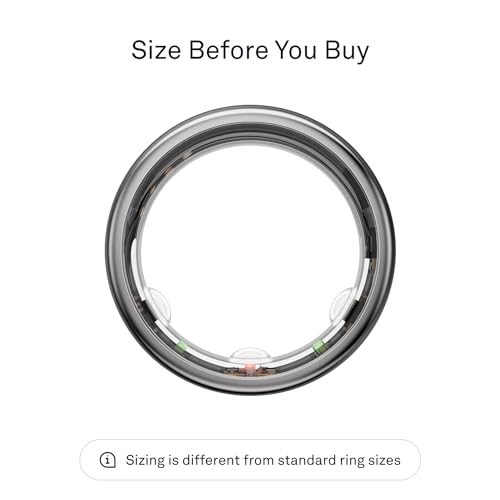
The Oura Membership: Unlocking Your Personal Health Insights
The Oura Ring hardware is the data collection tool, but the Oura Membership is the engine that transforms that raw data into actionable, personalized wisdom. New members receive the first month free, after which the service is a recurring $5.99 per month. It’s important to understand that without the membership, the ring’s functionality is extremely limited, essentially only showing you your three daily scores without any of the contributing metrics, insights, or historical trends. The membership is, for all intents and purposes, a mandatory part of the Oura experience.
So, what does this monthly fee get you? It unlocks the full power of the Oura platform, a sophisticated ecosystem designed to help you understand your body’s signals. This includes:
- Detailed Daily Scores: A deep dive into the factors contributing to your Sleep, Readiness, and Activity scores.
- Advanced Biometric Analysis: Access to minute-by-minute graphs and trends for Resting Heart Rate, Heart Rate Variability (HRV), Body Temperature, Respiratory Rate, and more.
- Personalized Guidance: The app provides daily, weekly, and monthly insights based on your unique data, helping you understand why you feel the way you do and suggesting adjustments to your lifestyle.
- Rich Content Library: Access to a library of guided audio sessions for meditation, sleep, and mindful moments, which are often recommended by the app in response to your biometric data (e.g., a high stress reading might prompt a recommendation for a breathing exercise).
- Continual Feature Updates: The membership model allows Oura to continuously invest in research and development, rolling out new features and algorithms like the recent Stress and Resilience tracking.
The subscription model can be a point of contention for those accustomed to a one-time hardware purchase. However, it’s best to view the Oura Ring not as a simple gadget, but as an ongoing personalized health service. The value proposition lies in the continuous analysis and interpretation of your data. The algorithms are constantly being refined, and the insights become more powerful over time as the app learns your personal baselines. For $5.99 a month—less than the cost of two cups of premium coffee—you are subscribing to a 24/7 health consultant that lives on your finger, providing a level of personalized biological insight that was previously available only in clinical settings.
Deep Dive: The Three Pillars of Oura Tracking
The entire Oura experience is built upon three core pillars, represented by three simple scores you receive each morning. Let’s perform a comprehensive benchmark of each one.
Pillar 1: Unrivaled Sleep Tracking – The Foundation of Health
This is where the Oura Ring truly dominates the wearable market. While many devices track sleep, Oura’s accuracy and the depth of its analysis are in a class of their own, largely due to its “more accurate by design” philosophy of using the finger for data collection.
The Science of Sleep Stages
Oura doesn’t just tell you how long you slept; it provides a detailed breakdown of your “sleep architecture,” or the time you spent in each of the four sleep stages. Understanding this is vital for understanding your recovery.
- Deep Sleep (The Restorer): This is the stage of physical restoration. During Deep Sleep, your body repairs tissues, builds bone and muscle, and strengthens the immune system. The brain produces slow delta waves, and it’s very difficult to be woken up. Oura’s ability to accurately track this stage is crucial for athletes or anyone focused on physical recovery. Consistent, sufficient Deep Sleep is linked to feeling physically refreshed upon waking.
- REM Sleep (The Rejuvenator): Rapid Eye Movement sleep is the stage of mental restoration. This is when your brain processes memories, cements learning, and engages in dreaming. Your heart rate and breathing quicken. Getting enough REM sleep is critical for cognitive function, creativity, and emotional regulation. Oura tracks the duration and timing of your REM cycles, providing insight into your mental recovery.
- Light Sleep (The Facilitator): This stage makes up the majority of your sleep time and acts as a transition between the other stages. It still plays a role in memory consolidation and physical recovery, but to a lesser extent than REM and Deep Sleep.
- Awake Time: It’s normal to have several brief periods of being awake during the night, even if you don’t remember them. Oura tracks these moments to help calculate your overall sleep efficiency.
The Key Sleep Bio-Signals
Oura’s sleep analysis goes far beyond stages by tracking a suite of critical bio-signals throughout the night:
- Resting Heart Rate (RHR): Your heart rate while you are in a state of complete rest. A lower RHR is generally a sign of better cardiovascular fitness and recovery. Oura tracks your RHR throughout the night and identifies your lowest point, or “nadir.” An elevated RHR can be an early indicator of illness, stress, poor recovery, or even a late meal or alcohol consumption.
- Heart Rate Variability (HRV): Perhaps the single most important metric for understanding your body’s readiness. HRV is the measure of the variation in time between consecutive heartbeats. Contrary to what one might think, a highly variable heart rate is a sign of a healthy, resilient, and well-rested autonomic nervous system. A higher HRV indicates your body is ready to perform. A low HRV is a powerful signal that your body is under stress (be it from a hard workout, illness, poor sleep, or mental strain) and needs to focus on recovery. Oura is one of the few consumer wearables that tracks HRV accurately and makes it a cornerstone of its analysis.
- Body Temperature Deviation: The ring measures your skin temperature every minute while you sleep, establishing a personal baseline over time. It then reports your temperature as a deviation from this baseline (e.g., +0.3° or -0.2°). An elevated body temperature is one of the most reliable early indicators that your immune system is fighting something off, often before you consciously feel sick. For female users, this data is also incredibly powerful for cycle tracking and is the basis for Oura’s partnership with the fertility app Natural Cycles.
- Respiratory Rate: This measures the number of breaths you take per minute. A typical adult respiratory rate is between 12-20 breaths per minute. Significant changes in your nightly average can be an indicator of changes in your health or fitness level.
Oura combines all these metrics, along with sleep duration and timing, into a single, intuitive Sleep Score out of 100. This allows you to see, at a glance, the quality of your nightly recovery.
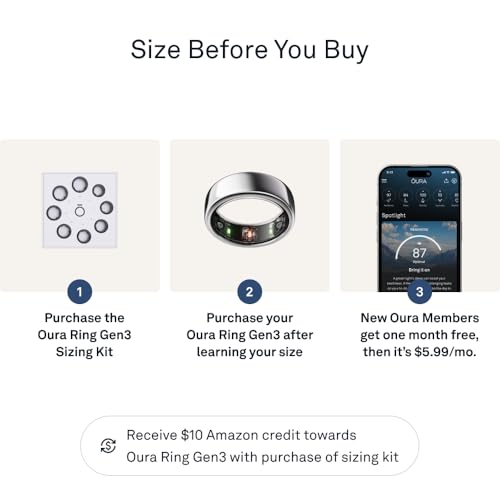
Pillar 2: Readiness – Are You Ready to Perform?
The Readiness Score is Oura’s crown jewel. It synthesizes data from your recent sleep quality, your recent activity levels, and your key biometric signals to answer one simple question each morning: “How prepared is your body for the challenges of the day?” Scored from 0-100, a high score indicates you’re ready to take on a strenuous workout or a mentally demanding day. A low score is your body’s signal to prioritize rest and recovery.
This score is a game-changer because it encourages users to listen to their bodies. In a culture that often glorifies pushing through pain and exhaustion, Readiness provides objective, data-driven permission to take a rest day. This proactive approach to recovery can help prevent overtraining, reduce the risk of injury, and optimize long-term performance.
The Readiness Score is calculated from several key contributors:
- Previous Night’s Sleep: The quality and duration of your most recent sleep are primary inputs.
- Sleep Balance: This looks at your sleep patterns over the past two weeks to see if you’re carrying any “sleep debt.”
- Previous Day’s Activity: A very strenuous day will lower your initial readiness, as your body needs time to recover.
- Activity Balance: This metric assesses if your activity levels over the past few weeks have been optimal. Too little activity can be as detrimental as too much.
- Resting Heart Rate: Your lowest heart rate from the previous night is compared to your long-term baseline.
- Heart Rate Variability (HRV) Balance: Your most recent HRV is compared to your long-term average. This is a very heavily weighted contributor.
- Body Temperature: Any significant deviation from your baseline will lower your score, as it indicates your body is under strain.
- Recovery Index: This measures how long it takes for your heart rate to stabilize during the night. A quick stabilization is a sign of good recovery.

Pillar 3: Activity – A Balanced Approach to Movement
While many wearables are hyper-focused on closing activity rings and hitting step counts, Oura takes a more nuanced and balanced view. The goal isn’t simply to maximize caloric burn, but to find a sustainable balance between movement and rest that supports your recovery and overall health. The Activity Score reflects this philosophy.
The contributors to the Activity Score include:
- Meet Daily Goals: Oura sets a personalized daily activity goal based on your Readiness score. On a high-readiness day, it will encourage more activity; on a low-readiness day, it will set a lower, more achievable goal.
- Training Frequency & Volume: These metrics look at how often and how intensely you’ve been training over the past week to help you avoid undertraining or overtraining.
- Recovery Time: It tracks the number of rest days you’ve taken to ensure your body has adequate time to repair itself.
- Stay Active: This tracks your total daily calorie burn from all movement, not just formal exercise.
- Move Every Hour: The ring gently reminds you to get up and move if you’ve been inactive for too long, helping to combat the negative effects of a sedentary lifestyle.
Oura’s Automatic Activity Detection can recognize over 30 different types of activities, from walking and running to swimming and housework, and logs them for you. For more specific workouts, you can manually add them or sync them from a connected app like Strava or Apple Health. With the Gen3 ring, Oura also introduced Workout Heart Rate tracking, allowing you to see your real-time heart rate and a post-workout analysis, making it a more capable fitness companion than previous generations.

Hardware, Design, and The Digital Ecosystem
A Masterpiece of Miniaturization
The Oura Ring Gen3 Horizon is a triumph of engineering and design. The “Horizon” model is distinguished by its perfectly round, minimalist design, which looks more like a piece of high-end jewelry than a powerful computer. It is crafted from durable and lightweight titanium, ensuring it can withstand the rigors of daily life, from weightlifting to swimming. It is water-resistant up to 100 meters (330 feet), so you never have to take it off.
The battery life is another standout feature, lasting between 5-7 days on a single charge, depending on usage. A full charge takes only 20-80 minutes, meaning you’ll spend very little time without it. This long battery life is crucial for a device designed for 24/7 wear, ensuring it can capture a complete and uninterrupted picture of your health.
Seamless App Integration
Oura understands that it is part of a larger personal health ecosystem. The Oura App is compatible with both iOS and Android and integrates seamlessly with over 40 other applications. You can sync your data to and from major health hubs like Apple Health and Google Health Connect. This allows you to share data between your favorite apps—for example, a workout tracked on your Apple Watch can be automatically imported into Oura and factored into your Activity and Readiness scores. This bi-directional syncing creates a more complete and unified view of your health data without requiring manual entry.
HSA/FSA Eligibility
In a significant nod to its status as a legitimate health device, the Oura Ring is eligible for purchase using Health Savings Account (HSA) or Flexible Spending Account (FSA) funds. This can provide a substantial cost saving for eligible individuals and further solidifies the ring’s position as a serious tool for health management rather than just a consumer gadget.

Performance Summary: Pros and Cons
After this extensive analysis, we can distill the Oura Ring Gen3 Horizon’s performance into a clear list of its strengths and weaknesses.
Pros: What Makes It a Market Leader
- Unmatched Sleep Tracking Accuracy: The ring’s form factor and sensor technology provide clinical-grade sleep analysis that is superior to any wrist-based device.
- The Insightful Readiness Score: Oura’s flagship feature provides a holistic and actionable daily assessment of your body’s recovery and capacity to perform.
- Superior Comfort and Discretion: The lightweight, screen-less design makes it comfortable to wear 24/7, especially during sleep, without the distractions of a smartwatch.
- Actionable Health Insights: It excels at providing early warnings for illness, stress, and overtraining by tracking key metrics like HRV and body temperature.
- Exceptional Battery Life: 5-7 days on a single, quick charge means less time tethered to a charger and more consistent data collection.
- Robust and Expanding App Ecosystem: Seamless integration with dozens of other health and fitness apps creates a unified health data platform.
- Premium, Durable Design: The titanium construction is both beautiful and tough, making it suitable for any environment.
Cons: Potential Drawbacks to Consider
- The Subscription Model: The mandatory $5.99/mo membership fee is a recurring cost that adds to the total cost of ownership over time.
- Limited Real-Time Fitness Metrics: While it can track workout heart rate, it is not a replacement for a dedicated sports watch (like a Garmin or Apple Watch) for athletes who need real-time pace, distance, and heart rate zone data on a screen during their workouts.
- Initial Cost: The upfront price of the hardware is a significant investment compared to many wrist-based fitness trackers.
- No Screen: For users who want to glance at the time or see notifications on their wearable, the Oura Ring’s screen-less design will be a drawback.

Conclusion: The Verdict on the Oura Ring Gen3 Horizon
After an exhaustive performance benchmark, the Oura Ring Gen3 Horizon unequivocally establishes itself as the leader in the smart ring category and arguably the most insightful consumer health wearable on the market today, particularly for those who prioritize sleep and recovery. It is a device built on a foundation of scientific rigor, from its insistence on a proper fit to its reliance on clinically significant biomarkers like Heart Rate Variability and body temperature.
The Oura Ring is not for everyone. The hardcore marathon runner or cyclist who needs a screen with real-time performance data will still want a dedicated GPS sports watch. But that’s not who Oura is for. The Oura Ring is for the individual who understands that a healthy life is a balanced equation of stress and recovery. It is for the bio-hacker who wants to optimize their performance, the busy professional trying to manage stress, the athlete focused on preventing overtraining, and anyone who simply wants to wake up each morning with a deeper understanding of their own body.
The subscription fee, while a valid consideration, is justified by the depth and quality of the continuous insights provided. You are not merely buying a piece of hardware; you are investing in a personalized health service that learns and grows with you. The Oura Ring Gen3 Horizon delivers on its promise. It is a revolutionary device that provides a profound, data-driven window into your well-being, empowering you to make better decisions every day. For those serious about optimizing their health from the inside out, it is, without question, the gold standard.
See more posts in the category Rings.
